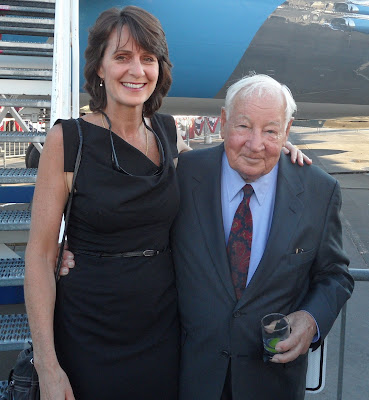"Off the Record Q & A with a Local A.M.E."

DR. Larry
Dr. Larry, I received a great question from one of our readers about weightlifting….
“Pilots need to maintain cardiovascular and overall fitness throughout their lives, and aerobic exercise is usually the main means of doing so. Do you recommend pilots also do weightlifting? Is weightlifting healthy, and do the benefits outweigh the negatives?”
I’d never thought of any negatives about weight lifting, only benefits—Increases metabolism, creates strong bones, and prevents back issues with demands of carrying luggage around the world. We would all love to hear your advice. Also, in alignment with this question, what type of exercise would you recommend for pilots to maintain overall good health? Is there one exercise better than the other for optimal health specific to the job?
Good question Karlene, and more power to the pilot who stays fit. For the record, let’s acknowledge that fitness is both physical and mental. Also, the following are my beliefs, based upon 30 years of sports medicine in addition to watching my patients, friends, relatives and myself getting older.
Anyone with experience knows staying fit is much easier than getting fit. As we age, we lose muscle mass, making it harder to do things we did when we were younger. Daily living requires some level of muscle and cardiovascular ability. Climbing stairs, getting out of chairs, lifting bags out of cars and planes are examples of simple activities requiring strength. Balance, coordination, and personal independence demand muscle tone. What's more, when muscles atrophy joints tend to deteriorate. The question then isn’t why to stay strong but rather, how and when do we make it happen?
Time is in short supply for most of us and sad as it sounds, people in general have a limited amount of time to take care of themselves. Given the most critical aspects of wellness are cardiovascular and cerebrovascular health, I recommend aerobic type workouts first and foremost. We can be structurally weak and still live well, but not when we are cardiac weak. Twenty to thirty minutes per day, four to five days per week of raising one's breathing (and heart rate) to a level slightly harder than normal will meet minimum benefits.
The next best activity is strength training and there is no down side if done correctly. Fifteen to twenty minutes, two to four days a week of mild to moderate training will maintain or improve strength. Working on repetition rather than max weights will go further for the casual lifter. One can do both upper and lower body in the same session. If working out more often, vary between upper and lower body to give a day between lifting to allow for muscle rebuilding.
Lastly, yoga, Pilates or tai chi are encouraged to help with flexibility, core strength and mental alertness, among other benefits. These too take time yet they can be done while traveling if one has the desire and a bit of creativity.
Everyone has different tastes and goals when it comes to exercise. Most of us can't do everything, so the key is pick something, or things you like, do them consistently and don’t let home or travel provide an excuse. Remember, doing something is far better than nothing, then pat yourself on the back.
P.S. If it makes you feel better, few people actually “enjoy” exercising for the sake of exercise, and it's often said, the best feeling of exercise is taking the shoes off when it’s over!
To your good health,
Dr. Larry Greenblatt
Advanced Senior AME
Heart Attack and Stroke Prevention
Family and Sports Medicine
http://www.cmadoc.com/
Thank you Dr. Larry for the excellent advice. And... for the record, I love to exercise for the sake of exercise. I actually can hardly wait until I put on my tennis shoes!
For everyone who is busy, but still finds time to exercise, how do you do it?
Enjoy the Journey!
XOX Karlene


























































